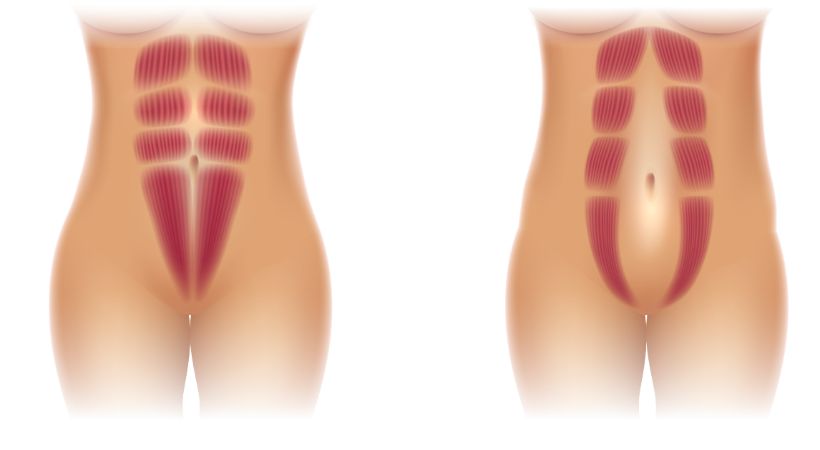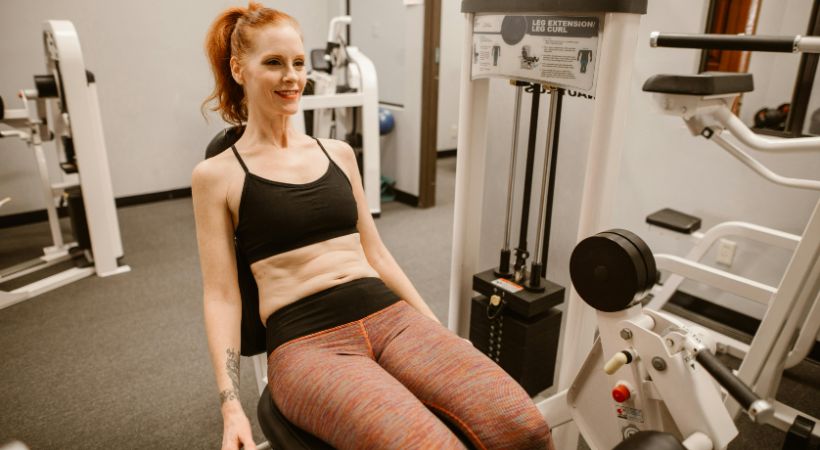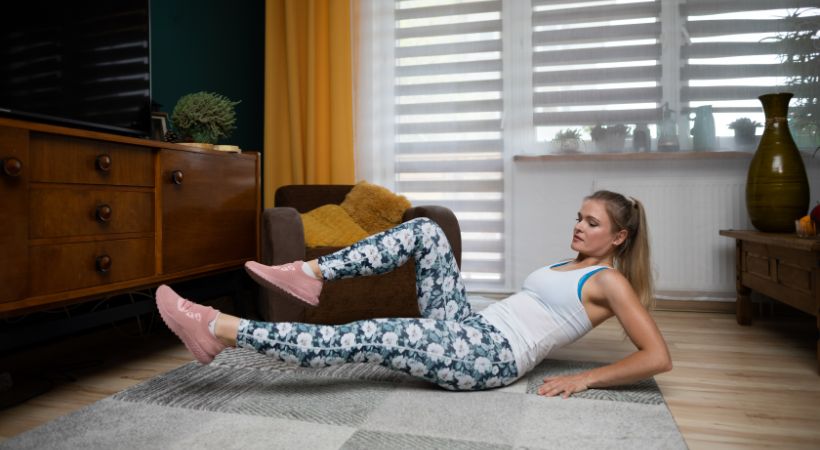Some limitations apply to prenatal exercise during pregnancy, as protecting the baby is always the priority. Please speak with your GP before you begin any postpartum exercise.
We understand that if you regularly work out, it can be a huge shock to the system to have to put your favourite workouts on hold. So, you will likely be eager to jump back into working out how you once did.
When pregnant, your body can completely change, and it is not uncommon for someone to want to snap back to their old body as soon as possible. The core area, in particular, is affected during pregnancy, as that is where the baby develops and grows, making the belly expand.
At POW8R, we offer a comprehensive guide to strengthening your core. Before you start exercising, take the time to read this guide to learn the best and safest exercises.
Changes to Your Core Due to Pregnancy
You also need to remember that the area can still be delicate after you have given birth, so when it comes to exercise, you have to be incredibly careful to ensure that you do not cause further damage.
Remember, you just grew an entire person inside of you, which is pretty badass, but your body isn’t going to be the same after, and that isn’t necessarily a bad thing; it’s just a new thing.
After pregnancy, people tend to only really think about the aesthetic changes to their core, and they neglect to acknowledge biological changes to their bodies.
For example, a lot of people forget about the possibility of diastasis recti after they have given birth, which often leaves women feeling negative about their postpartum bodies.
What is Diastasis Recti?

When you are pregnant, your abdominal muscles can quite literally separate. This is diastasis recti, also known as divarication.
This occurs because your growing uterus pushes the muscles apart, elongating and weakening them. Don’t worry; diastasis recti can be addressed through postnatal ab exercises.
Signs That You Have Diastasis Recti
Because diastasis recti is the division between either side of your abdominal muscle, you may be able to see a physical ridge running through the middle of your stomach.
If you have a ridge, strain your muscle slightly, and if it becomes worse, that is a telltale sign of the condition.
Another way to check for diastasis recti is through touch. Gently push your fingers down the centre of your stomach.
If you feel more than two fingers’ width of space between your abdominal muscles, you likely have diastasis recti.
This is usually a massive point of insecurity for women after giving birth. Though it is an entirely natural part of the pregnancy process, we understand it can still cause insecurity.
You’ll be glad to know that exercise can repair diastasis recti and tone the area to create a firmer look.
The Power of Postpartum Core Exercises
Choosing the right core exercises can transform the appearance of your midsection and help you regain confidence. However, it’s crucial to be selective about your chosen exercises to avoid injuring your body.
How long should you wait before you do core exercises?
It’s recommended that you wait until after your postpartum checkup before beginning any core exercises. This will allow you to consult with your doctor and get the all-clear.
The Best Postpartum Core Exercises

Here are our recommendations for the best postpartum exercises for strengthening your core.
Heel Slides
Heel slides are an easy and effective postnatal exercise. When performing this exercise, ensure that your back remains neutral throughout. Do no more than 20 slides with each leg when you first start, as you can build up with more practice.
Heel Slide Method
- Lie on your back with your knees bent and your feet spread equally apart, flat on the floor.
- Extend one leg at a time with care until it is flat, exhaling simultaneously.
- As you slowly bring your heel back in, deeply inhale.
- Repeat for 20 reps, alternating between each leg.
As your core becomes more robust, you can increase the number of heel slide reps you do.
Heel Taps
Heel taps are great for working out your core muscles; this exercise can be a bit strenuous, so take a break whenever you need to.
Heel Tap Method
- Lie on your back with both feet on the floor.
- Lift both legs at the same time, engaging your core.
- Inhaling, gently tap your right heel to the floor.
- While exhaling, return your leg to its previous position.
- Repeat with the other leg.
- Do ten reps to start, increasing as you become more comfortable.
Glute Bridge
A glute bridge will engage your core abdominal muscles, and work out your glutes, toning your glute muscles.
Glute Bridge Method
- Lie on your back with your feet firmly planted on the floor and your knees bent.
- Engage your glute and abdominal muscles.
- Slowly lift your hips off the floor; you know if your form is correct if your knees sit diagonally from your shoulders.
- Hold that position, engaging your core, inhaling deeply as you lower your hips to the floor.
- When on the floor, re-engage the core and repeat.
This exercise can be strenuous, so if you start to experience discomfort at any point, take a break or try a different exercise from the list.
Leg Extensions

Though leg extensions are commonly associated with improving leg strength, they can also incredibly benefit your abdominal muscles.
Leg Extension Method
- Lie on your back with your legs in a tabletop position.
- Extend one leg out at a 45-degree angle. The exercise is more challenging depending on your leg’s height. If you can, hold for 30 seconds, as this will push your muscles.
- Alternate between legs, repeating for as many reps as you can comfortably complete.
Bent Leg Raises
Before engaging in bent leg raises, you should first confirm with your doctor that you are ready for the exercise, as it can put a lot of pressure on your lower abdominal muscles.
Bent Leg Raises Method
- Lie on a mat with your arms by your side and your knees bent.
- Engage your core and inhale deeply, bringing one leg towards your chest.
- Alternate between legs, taking the time to engage your core between movements.
- You can do this exercise as quickly or as slowly as you would like, but we recommend taking your time, as this will garner the best results.
Leg Circles
A popular pilates exercise, leg circles are great for engaging your core and strengthening your hip muscles. Leg circles engage your deep core muscles and are an excellent workout choice.
Leg Circles Method
- Lie on your back with your legs in the tabletop position.
- Deeply inhale and extend one leg up to the ceiling.
- As you exhale, extend your leg out to the side and back to the ceiling. Be sure to engage your core throughout this movement.
- Move your legs in a circular motion. If you struggle to do this with extended legs, you can do it with your knee bent.
- Repeat several times before switching legs. Remember to circle your leg in the opposite direction to your previous movement.
- Repeat for as long as you feel comfortable.
Regain Your Confidence With POW8R

Now that you know about the benefits of home workouts for strengthening your core, you may be eager to try other exercises to improve your overall physical health and strength.
At POW8R, we offer a women’s fitness app that provides unlimited access to hundreds of on-demand workouts and one-on-one guidance from our trainers.
If you want to learn more about how POW8R can help you meet your fitness goals, contact our team today to discuss our membership options.